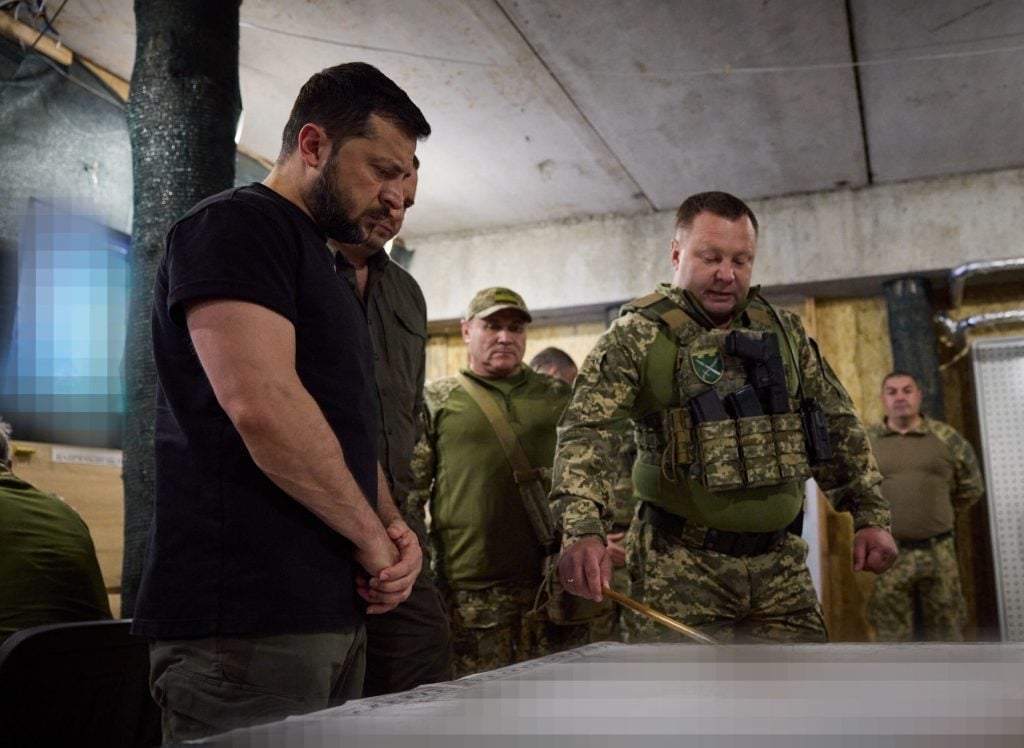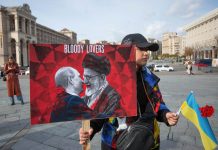By Dennis Soltys, for UkraineAlert
More than three months since the start of Ukraine’s much hyped counteroffensive, the slow progress of the Ukrainian military is fueling a new round of calls for a return to the negotiating table. But while many in the West are now arguing that some kind of compromise agreement with the Kremlin is inevitable, it would be both premature and dangerous to offer Vladimir Putin any concessions at this point.
A land-for-peace deal that allowed Russia to remain in possession of occupied Ukrainian lands would reward Putin for his invasion, while allowing Russia to restart the war once it had regrouped and rearmed. In order to understand why this would be such a bad idea, it is crucial to appreciate the imperial ambitions driving today’s war.
Despite the skillful messaging of Kremlin officials and regime propagandists, Russia’s invasion of Ukraine was not prompted by legitimate national security concerns tied to NATO enlargement. This was confirmed in recent months by Russia’s remarkably relaxed response to Finnish and Swedish NATO accession.
Instead, Putin and other Kremlin leaders have made clear their intention to end Ukraine’s existence as an independent state and as a nation. They view Ukraine as an indivisible element of Russia itself and believe the country has been artificially separated from Russia by the historical injustice of the Soviet collapse. Putin and many members of the Russian establishment also regard the consolidation of Ukrainian democracy as an existential threat to their own authoritarian empire.
Putin sees it as his mission to extinguish Ukrainian statehood and reestablish imperial Russian dominance over Ukraine. There is ample evidence of this throughout the Russian-occupied regions of Ukraine, where the Russian occupation authorities are working to eradicate all manifestations of Ukrainian national identity.
Given the scale of Russia’s imperial ambitions and the Kremlin’s evident commitment to destroying Ukraine, any ceasefire would merely serve as a pause. It would constitute a victory for Russia and a defeat for the international security order. Most importantly, it would condemn millions of Ukrainians to the horrors of permanent Russian occupation. The Ukrainian authorities have a moral obligation to make sure this does not happen, and have made clear they will not sacrifice their compatriots. Ukraine’s partners should do likewise.
Much of the pessimism surrounding the current Ukrainian counteroffensive is the result of unrealistic expectations along with misleading perceptions of Ukraine’s capabilities and goals. Critics fault the Ukrainian military for slow progress but fail to acknowledge that Kyiv has not received the weapons required for a more rapid advance. This relates to specific categories of weapons such as long-range missiles and F-16 fighter jets, and also to smaller-than-anticipated quantities of tanks, armored transports, and other vital equipment. As a result, Ukraine has been forced to advance against a well-armed and deeply entrenched enemy largely on foot and without air cover.
Ukraine’s international partners have also imposed a range of restrictions on the weapons they are providing, including a ban on attacks against targets within the Russian Federation. As a result, Russia is free to bomb Ukraine’s civilian infrastructure while its own industry and logistics networks remain safe from Ukrainian attacks. This leaves Ukraine at a major disadvantage and creates an uneven battlefield that inevitably favors Russia.
It is also misleading to judge Ukraine’s counteroffensive purely in terms of territory liberated from Russian occupation. At this stage in the campaign, a more relevant measure would be to assess the quantity of Russian troops and equipment destroyed. This approach results in a significantly more promising picture from a Ukrainian perspective.
Ukraine’s major victories during the first eighteen months of the war were all preceded by extensive operations to soften up Russian forces and hamper their logistics. This was the case in the Battle of Kyiv during the first weeks of the war, in the Kharkiv region six months later, and in Kherson in November 2022. Similar processes are currently underway on a far larger scale along the front lines in southern and eastern Ukraine.
At this point in the counteroffensive, Ukrainian forces have succeeded in crossing some of the densest minefields and have breached the first lines of Russia’s complex defensive fortifications. This has been achieved without committing all of the troops who received training with Ukraine’s NATO partners during spring 2023.
With Ukrainian armor vulnerable to Russian air, artillery, and drone strikes, Ukrainian commanders will remain heavily reliant on infantry, according to Ukrainian intelligence chief Kyrylo Budanov. There is therefore less reason to believe Ukrainian advances will be stalled by the onset of wetter or colder weather in the coming months, Budanov commented in Kyiv on September 9.
Nor is it essential for the Ukrainian military to advance the entire distance to the Sea of Azov on the country’s southern coastline. Many analysts believe it will be sufficient to cover the Kremlin’s key rail and road corridors through the so-called land bridge linking Russia with occupied Crimea. This could effectively isolate Russian troops in southern Ukraine and leave them heavily dependent on the Crimean Bridge route for resupply.
While most of the recent reporting on Ukraine’s counteroffensive has been overly negative, the challenges facing the Ukrainian military should also not be underestimated. Russia retains air superiority and has developed formidable drone capabilities. As Ukrainian troops advance and overcome the initial defensive lines constructed during the first half of 2023, Russian forces are already creating new obstacles in depth.
It is now apparent that Ukraine’s so-called summer counteroffensive is not in fact a seasonal affair, and will continue through the coming months into winter. At this stage, it is far too early to declare the offensive a failure. Indeed, many Ukrainian analysts believe the campaign is proceeding satisfactorily and expect to see further significant advances before the end of the year. As Ukraine’s battle-hardened military edges forward, it is vital that the country’s international partners remain committed and continue to provide the military aid necessary to secure Ukrainian victory.
By Dennis Soltys, for UkraineAlert
Dennis Soltys is a retired Canadian professor of comparative politics and a specialist on the Eurasian region.





